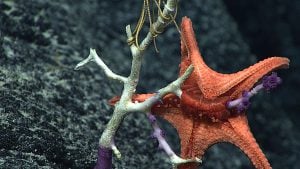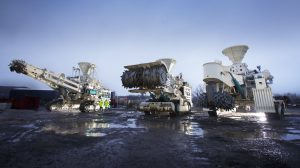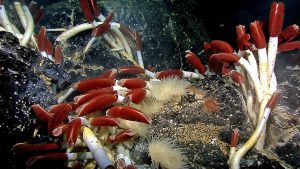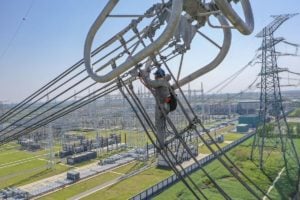What is deep-sea mining?
It’s the process of retrieving mineral deposits from the deep-sea floor. This is the area more than 200 metres below sea level. It covers around 65% of the planet and harbours a rich diversity of species adapted to the harsh environment, many still unknown to science. It also encompasses unique geological features, including mountain ranges, plateaus, volcanic peaks, canyons, vast abyssal plains and the Mariana Trench, which at almost 11,000 metres is the greatest depth registered in the ocean.
Is mining taking place now?
Shallow-water mining for sand, tin and diamonds is already happening around the world, and some deep-sea mining has taken place within the territorial waters of certain countries. But deep-sea mining in international waters that belong to no one nation, but to the “common heritage of mankind”, is currently only at the exploration stage.
To date, 31 contracts to explore for 15 years have been granted to assess the size and extent of three different types of mineral deposits in areas totalling more than 1 million square kilometres. Actual mining cannot begin there until “the code” is agreed.
What is the code and who decides it?
The code is the entire body of rules, regulations and procedures that will govern the exploitation of minerals in international waters. It is being developed by The International Seabed Authority (ISA), an independent organisation based in Kingston, Jamaica. The ISA was established under the UN Convention on the Law of the Sea and has 167 member states plus the EU.
When is the code expected to be finalised?
Negotiations on the code are set to resume in early December 2021 after being delayed due to Covid. The original deadline was 2020, but the slow progress of the ISA has frustrated industry and led some parties to take action. In June, the small island state of Nauru invoked a never-before-used rule that compels the ISA to allow mining to proceed within two years under whatever regulations are in place at that time. In July, a group of African nations called finalising the code by that mid-2023 deadline a “seemingly insurmountable” challenge. In October, several Latin American and Caribbean countries also said the code will take longer to finalise, and that delegations remained far from in agreement on key issues. A request by Chile to postpone the early December meeting was rejected, with the ISA secretary-general, Michael Lodge, saying it was “both necessary and urgent”.
Who is exploring?
A mix of corporate enterprises, state-owned companies and several governments, including China, France, Germany, India, Japan, South Korea, Russia and the Interoceanmetal Joint Organisation (a consortium of Bulgaria, Cuba, the Czech Republic, Poland, the Russian Federation and Slovakia), as well as small island states such as the Cook Islands, Kiribati, Nauru, Singapore and Tonga.
What are they exploring for and where?
Nickel, copper, cobalt, manganese, zinc, silver and gold are some of the targets of proposed mining activities. Current exploration is focused on three types of marine mineral deposits: polymetallic nodules found lying on the seafloor; polymetallic sulphides, or “seafloor massive sulphides”, which form around hydrothermal vents; and cobalt-rich ferromanganese crusts that cover seamounts. Exploration zones are mainly in the Pacific, mid-Atlantic and Indian oceans.

Why do we need these minerals?
They’re used in various electronic products and energy storage – including smartphones, laptops, solar panels, wind turbines and electric vehicles. Terrestrial supplies are becoming harder and less profitable to extract while demand continues to grow. Advocates argue that deep-sea mining provides a source of reliable, clean and ethically sourced minerals compared to terrestrial operations, and that the world cannot transition to clean energy without them.
How would they be extracted?
Seabed formations would be scooped, dredged or severed by gigantic machines weighing more than a blue whale. The deposits would be piped up to a ship through several kilometres of tubing and processed at sea, where waste material would then be pumped back into the water.
What possible effects could deep-sea mining have on the ocean?
These processes would affect the seabed, the water column above it, and the surrounding area. The scraping of the ocean floor to extract the nodules could destroy deep-sea habitats of octopuses, sponges and other species. Mining of the vents, which harbour animal communities at densities that make them one of the most productive ecosystems on Earth, is likely to stir up sediment that could smother some animals. Other species that are uniquely adapted to the lack of sunlight and high pressure of deep water, could be affected by the noise and pollution. Scientists are concerned that not enough is known about these species or ecosystems to establish an adequate baseline from which to protect them or monitor the impact of mining.
Who stands to profit from deep-sea mining?
The ISA’s draft regulations state that money received from the proposed royalties or other financial regimes will be subject to a benefit-sharing regime, and distributed among members states, taking into account the interests and needs of developing states, particularly the least developed and land-locked. The payment regime is still under consideration and several different economic models are being considered.
When would mining start?
Contractors would have to conduct an environmental impact assessment in line with the rules, regulations and procedures set out by the ISA for mining rights to be granted. They will also need to demonstrate financial and technological capacity. Some industry groups say they are ready to begin as early as 2023, but most observers say that 2026 is more likely.
This is an updated version of an article first published in February 2019. It’s part of our deep-sea mining series. Read more here









